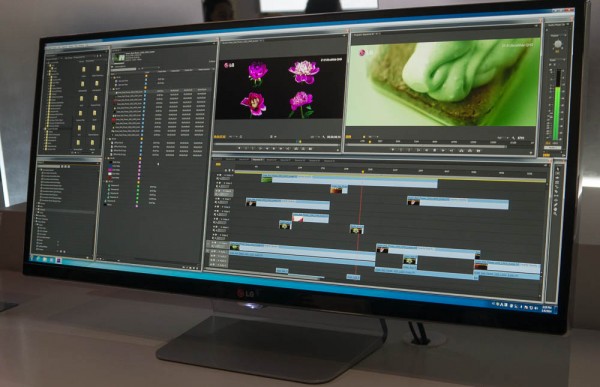For some reason I wasn't able to vote...just shows the poll results (not sure why).
EDIT: Came back later, was able to....
You didn't mention usage, and most on boards like this are gamers, but I don't happen to be one. I'm a developer (game engines among the targets), and my usage pattern is all over the map outside of games. For that, the 3 monitor setup is highly preferred.
Regarding the valid point made above, 3 monitors do not present a single viewing field left to right, and you have to turn your head. You do get the sense of extra peripheral view, though with a band at each join perceived as a boundary of a glass window. More to the point, it's critical to get the angle correct for your viewing distance. Key is to ascertain what angle represents a perpendicular view as you face each monitor. It's all too easy to have them insufficiently angled, such that left and right monitors have a distorted relative position when compared to the central monitor. The angle depends on the distance between you and the monitors. The should be aligned as central tangents on a circle where you are at the center (such that you could complete a circle about you with all monitors at the same distance and relative angle once you face them).
I find it invaluable for research, coding, debugging and, as is my custom, running multiple virtual machines (in as many as 6 different operating systems at once).
Assuming Windows is the host, there are management features which make the 3 separate monitors work well as distinct regions. When you full screen an application, it occupies the one display it's on, not the others. Dividing research into multiple, distinct regions which permit references, sub-references and comparisons of complex research materials seems very natural in a multiple monitor setup.
That is quite counter to what you want in gaming. Of course, a game would easily expand to occupy 3 monitors (and it appears more games support that then the ultra wide format), but the result is quite different. A ultra wide view monitor teases at offering a workspace, for non gaming, which functions LIKE a multiple monitor setup, but I've yet to find a way to control Windows to provide similar organizational conveniences, other than those you'd use for any single monitor setup. You can tile, of course, but that works out beneficially only with 2 applications.
The other, contrary point is that, perceptively, it could be argued these are too wide. It's difficult to get a position whereby you don't witness a color shift, due to angle of view, from left to center or right to center. Further, your perception of font sizes and perpendicular intersections is slightly distorted, if you used the monitor for CAD, for example.
This isn't dramatic, so many might argue it's a non-issue. I point it out merely as a thought to examine as you choose. You may find the issue more pleasing than the multi-monitor arrangement, but I am the opposite.
Older eyes may tend to prefer the multiple monitor choice, in my view, because each represents a fairly conventional viewing experience for the size, and we tend to expect the setup to operate as 3 separate but related viewing surfaces, instead of one extended viewing surface.
I have used the 3 monitor arrangement in editing very wide graphics content. I was editing the backdrop to a kiosk display (some convention where booths for each company exhibiting wares is toured by crowds). The display was 24' by 8' at 300 DPI. The software was Adobe Illustrator, with associated 3DS Max and Photoshop contributions. It was effective to treat the combination as a single wide display, accounting for the separating band of each display, but work was naturally concentrated on the central monitor.




